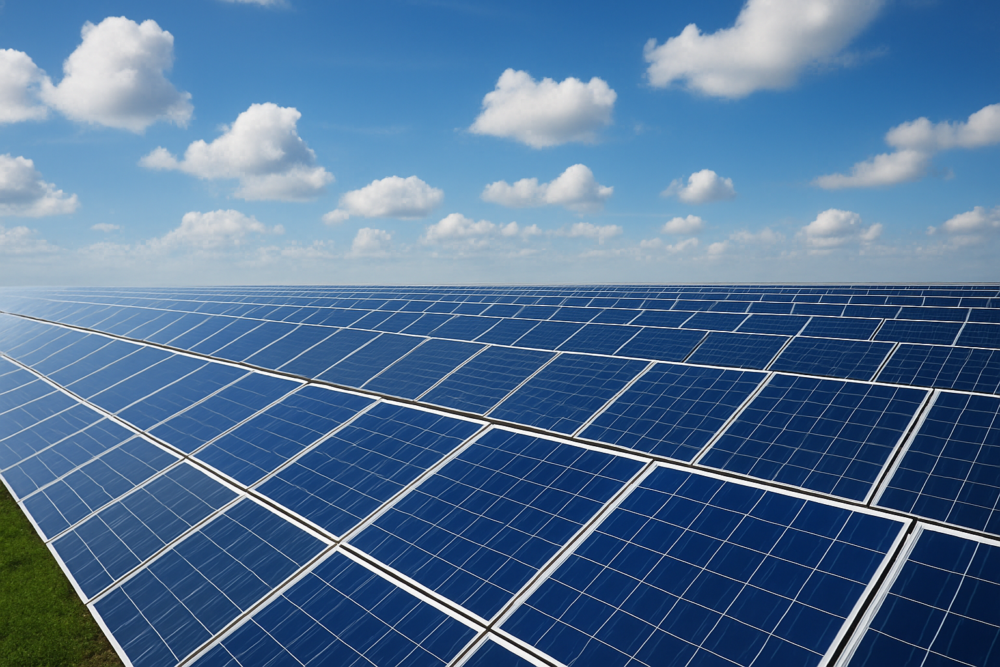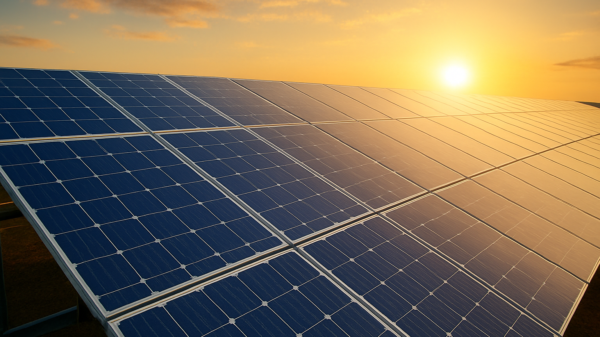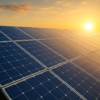SolarBank Corporation (NASDAQ: SUUN) is continuing to execute its community solar development pipeline, including an update on its plans to develop a ground-mount solar project called the Sydney Project in Nova Scotia.
The company said on Monday that the project will produce approximately 2,730 megawatt hours (Mwh) of clean energy annually. This is enough to electrify 221 homes of an entire year while eliminating 1,900 tons of carbon dioxide emissions per year. In terms of environmental benefit, this is the functional equivalent of removing 415 cars from the road.
AI Renewable Flow-through Fund owns the project, while SolarBank serves as the lead developer and builder. SolarBank will also partner with Trimac Engineering, a trusted local firm in Nova Scotia, to deliver the project.
Additionally, SolarBank has led community solar development in the United States, completing over 50 MW of projects. The company is now proud to apply its expertise in Canada as the community solar market begins to grow.
“This project underscores SolarBank’s significant expertise and strategic vision in helping to drive Canada’s renewable energy transformation,” said Dr. Richard Lu, President and CEO of SolarBank.
“With a proven track record of over a decade in community solar, commercial, and industrial projects, we’re proud to provide solutions on Nova Scotia’s ambitious renewable energy transition to deliver meaningful value for stakeholders and communities alike.”
Read more: Canadian Solar draws environmental certification nod from both Italy and France
Read more: Wendy’s restaurants in Florida to source power from renewable energy
Federal and Nova Scotia government support community solar
The Sydney project strengthens SolarBank’s community solar portfolio with a $4.57 million facility generating revenue from multiple streams. As the developer and EPC contractor for this 2.4 MW project, SolarBank captures value while limiting capital risk through its partnership with AI Renewable Flow-through Fund.
Permits are secured, and interconnection work is underway. Construction is expected to begin in Spring 2026. This timeline positions the company to earn near-term EPC revenues while also building long-term recurring income through O&M contracts.
The Sydney project will generate over $1.36 million in electricity savings for local residents over its lifetime. It will also create local jobs and support the province’s net-zero goals.
This marks SolarBank’s second community solar project in Nova Scotia. The Canadian federal government and the Province of Nova Scotia both actively support community solar. They offer several incentives, including the Smart Renewables and Electrification Pathways Program (SREPs), the Indigenous-Led Clean Energy Stream, and the Low Carbon Communities program.
Additionally, community solar plays a key role in Nova Scotia’s plan to reach 80 per cent renewable energy by 2030 and net-zero by 2035. The Sydney project is one of only four community solar contracts awarded under the program to date. It contributes to the province’s goal of adding 100 MW of solar power. This will reduce fossil fuel dependence and boost local economic development.
Unlike traditional rooftop systems, community solar allows renters, businesses, and homeowners to subscribe to the solar farm and receive bill credits and savings of $0.02/kWh—without installing any equipment. The project feeds directly into the local electricity grid. It also offers a flexible, accessible way for Nova Scotians to join the clean energy transition.
Read more: Canadian Solar launches portable energy storage cube
Read more: Innergex inks power purchase agreement for two solar projects in France
Canada’s solar market remains in early stages
The project leverages SolarBank’s proven execution capabilities and strategic partnerships. SolarBank has over 100 MW of projects built and a development pipeline exceeding 1 GW.
Additionally, the project’s clear timeline supports near-term EPC revenue generation. It also positions SolarBank to secure more development contracts in the rapidly growing community solar market.
Canada’s community solar market remains in its early stages. However, experts say it holds enormous potential as the country accelerates its clean energy transition.
According to Nicholas Gall, Director of Market Intelligence and Research at the Canadian Renewable Energy Association (CanREA), community solar could serve millions of Canadians who lack access to rooftop solar systems. Community solar offers a scalable solution for renters, condo dwellers, and homeowners with shaded or unsuitable roofs.
The market’s potential is vast. CanREA estimates that up to 75 per cent of Canadian households may be unable to host rooftop solar due to rental status or building constraints. Therefore, community solar presents a practical and inclusive pathway to increase solar adoption. These subscription-based projects allow users to benefit from clean energy without installing any equipment.
Additionally, community solar aligns well with Canada’s net-zero by 2050 targets. As provinces modernize their electricity grids, local solar generation can reduce transmission needs and improve grid resilience. Gall points out that provinces like Alberta, Ontario, and British Columbia could see strong growth in community solar with the right regulatory frameworks. Conversely, provinces that rely on centralized power generation may face policy hurdles before tapping into the market’s full potential.
Follow Joseph Morton on Twitter
joseph@mugglehead.com











